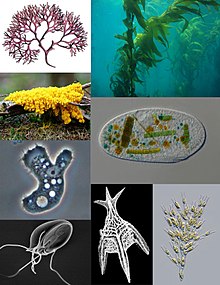
Back Asbliktakson Afrikaans أصنوفة سلة مهملات Arabic Tàxon «calaix de sastre» Catalan Papierkorb-Taxon German Rubuja genro Esperanto Taxón cajón de sastre Spanish آرایه زبالهدان Persian Taxon poubelle French Szemétkosártaxon Hungarian Takson keranjang sampah ID

Wastebasket taxon (also called a wastebin taxon,[1] dustbin taxon[2] or catch-all taxon[3]) is a term used by some taxonomists to refer to a taxon that has the purpose of classifying organisms that do not fit anywhere else. They are typically defined by either their designated members' often superficial similarity to each other, or their lack of one or more distinct character states or by their not belonging to one or more other taxa. Wastebasket taxa are by definition either paraphyletic or polyphyletic, and are therefore not considered valid taxa under strict cladistic rules of taxonomy. The name of a wastebasket taxon may in some cases be retained as the designation of an evolutionary grade, however.
The term was coined in a 1985 essay by Stephen Jay Gould.[4][5]
- ^ Friedman, M.; Brazeau, M.D (7 February 2011). "Sequences, stratigraphy and scenarios: what can we say about the fossil record of the earliest tetrapods?". Proceedings of the Royal Society. 278 (1704): 432–439. doi:10.1098/rspb.2010.1321. PMC 3013411. PMID 20739322.
- ^ Hallam, A.; Wignall, P. B. (1997). Mass extinctions and their aftermath. Oxford [England]: Oxford University Press. p. 107. ISBN 978-0-19-854916-1.
- ^ Monks, N. (July 2002). "Cladistic analysis of a problematic ammonite group: the Hamitidae (Cretaceous, Albian-Turonian) and proposals for new cladistic terms". Palaeontology. 45 (4): 689–707. Bibcode:2002Palgy..45..689M. doi:10.1111/1475-4983.00255.
- ^ Gould, S. J. (1985). "Treasures in a taxonomic wastebasket". Natural History. 94: 22–33.
- ^ Plotnick, Roy E.; Wagner, Peter J. (2006). "Round up the Usual Suspects: Common Genera in the Fossil Record and the Nature of Wastebasket Taxa". Paleobiology. 32 (1): 126–146. Bibcode:2006Pbio...32..126P. doi:10.1666/04056.1. JSTOR 4096821. S2CID 86606882.